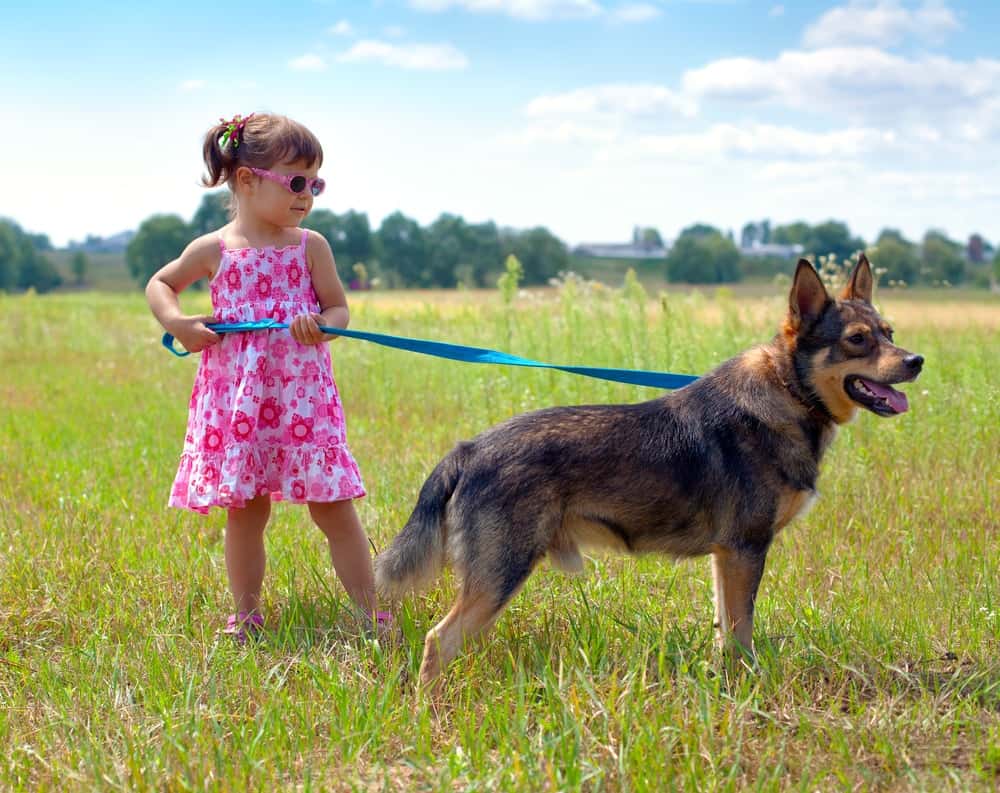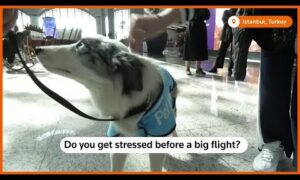“This post contains affiliate links, and I will be compensated if you make a purchase after clicking on my links.”
“Man’s best friend” is not just an empty phrase we’ve assigned to our furry companions. In fact, a dog’s presence in our lives can be much more determining than just for fun and play.
New research has discovered the fantastic benefits of therapy dogs in helping children deal with emotional, social and communication problems. When it comes to speech difficulties (common in children of various ages), active work with assistance dogs has shown to successfully improve children’s communication skills, from mild speech impairments to developmental issues like dysphasia.

Therapy dogs and developmental dysphasia (DD)
One of the common speech impairments is developmental dysphasia (DD), a condition that limits a child’s ability to form thoughts into intelligible words, articulate sounds, and communicate properly.
In a recent study, the effect of canine-assisted speech therapy was compared to traditional speech therapy with children diagnosed with DD. The aim was to determine whether a therapy dog’s presence and aid, alongside a speech-language pathologist, would improve the results.
The experimental group that had canine assistance sessions showed promising results and great potential for enhancing the conventional therapy methods, although further research is needed. Since DD patients also struggle to connect with their peers socially, therapy dogs showed useful in helping children open up, more confidently tackle their problems, and have more motivation to deal with communication issues, which is a great step towards a better quality of life.
Autism-related speech impairments and the significance of therapy dogs
One of the characteristic limitations ASD patients deal with is communication issues. Whether emotionally, socially, or physically related, speech impairments in ASD children can vary from mild stuttering to more severe conditions like selective mutism.
Some Autism patients may have difficulties understanding symbols and words in a different context. Others who are socially and emotionally challenged often develop defense mechanisms like robot-like speech, intentional babbling, or seek comfort in echolalia (repeating other people’s words as they are spoken).
The use of therapy or assistant dogs in speech treatment has proven very effective in helping ASD children, either in the presence of a certified SLP or placing the assistant dog with an autistic child’s family for some time. Numerous behavioral problems like tantrums, restlessness, and anxiety have been reported to decrease, with improved concentration and compliance with the parents’ or therapist’s instructions. All of this significantly improved the child’s chances to gradually make progress and effectively find alternative communication methods.

Spending time with a therapy dog also proved to calm down and provide emotional support to children stressed out by the speech therapy process. Dogs have a soothing effect on anxious children, decreasing isolation and improving engagement, focus, and a playful mood.
Motivation, self-confidence, and calmness – a dog’s role in successful communication
Children who struggle to express their feelings and thoughts with words can have an underlying emotional problem. The stress and painful efforts to properly communicate gradually trigger other issues like lack of self-confidence, motivation, and willingness to socialize and later build meaningful relationships.
Therapy dogs are trained to provide emotional support and sense when a child is upset and lonely.
Friedmann et al. study investigated the influence of a trained dog on children’s heart rate and blood pressure while engaged in cognitive activities (learning, reading, etc.). The presence of a friendly furry companion was associated with a lower pulse rate and blood pressure, making children more assertive and open for communication.
The authors also speculate that the therapy dog’s involvement in the learning or examining process can make the therapists, examiners, or teachers appear less threatening to the children, enabling them a positive atmosphere and a safe environment to verbalize their needs and opinions.
An array of programs in hospitals and clinics are organized around therapy dogs whose role is to encourage better language use and comprehension in children. Just having a well-behaved and friendly dog near a kid can be a reliable support for him or her if the speech therapy becomes too overwhelming or challenging. Although they can’t reply back, dogs are great listeners and not rarely do they serve as a practice interlocutor. A child can practice their verbal and socializing skills with a dog without experiencing a sense of authority and social nervousness.
Although typically effective with children, therapy dogs can be of great value to adults who struggle with speech impairments, mostly by providing emotional support. Experts are yet to discover the full influence our four-legged friends can have on our health and well being but slowly and surely we are acknowledging their importance in the education system and therapy.
About the Author:
Emma is a professional writer and blogger, with two furry friends and a lot of pet behavioral and pet health knowledge to share. She has written for numerous big animal magazines and health sites, and is a regular contributor to The Catington Post.


















